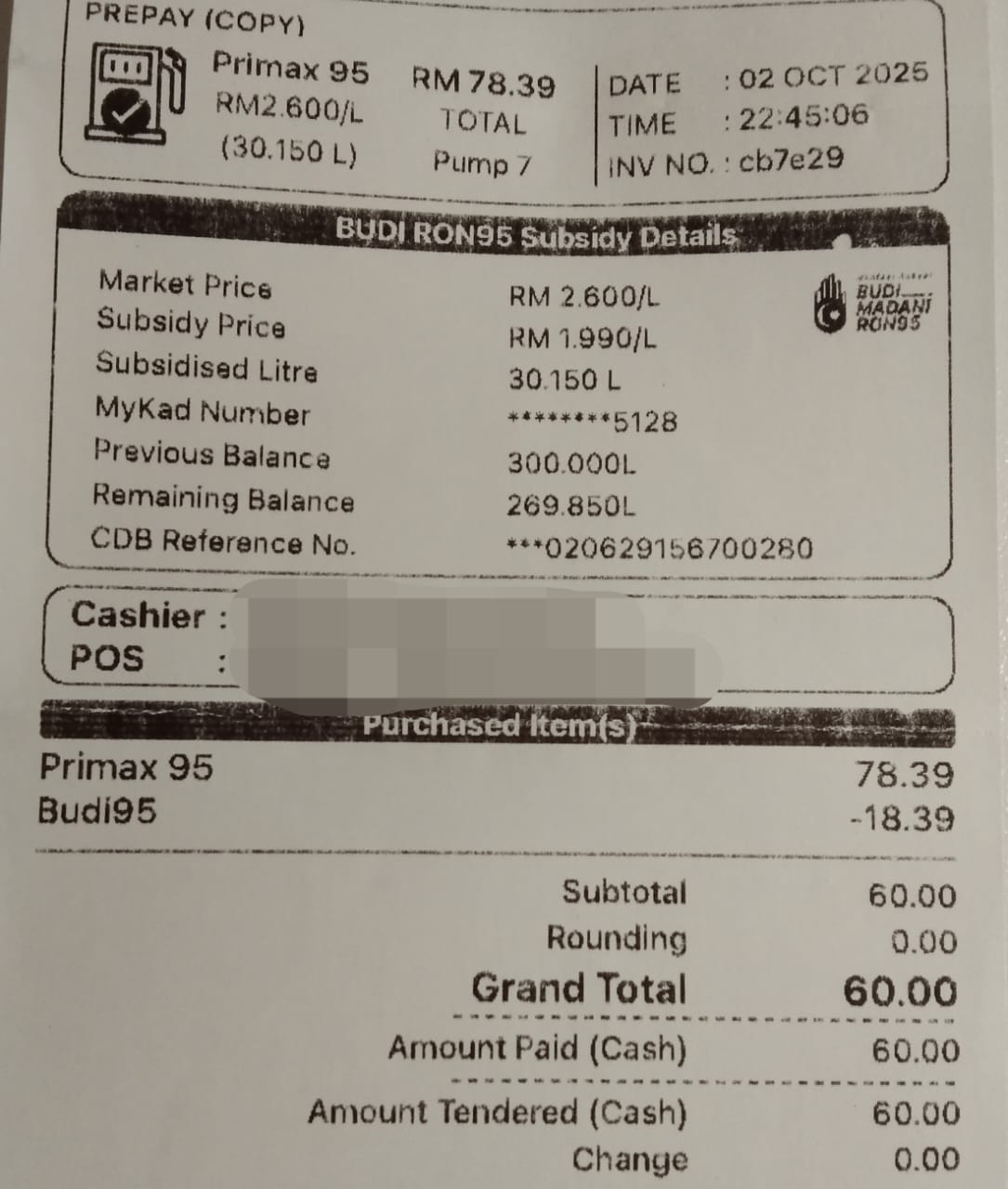Decoding Your Fuel Subsidy Receipt: The Real Meaning Behind Malaysia's RON95 Prices
What does the "subsidy" on your fuel receipt truly mean? We break down the numbers to reveal the difference between government outlay, genuine financial aid, and the role of administered prices in Malaysia's Budi RON95 program.

Every Malaysian driver receiving fuel subsidies has seen the receipt showing their "savings." But what do these numbers truly represent? A forensic examination reveals that the term "subsidy" on your petrol receipt encompasses more than direct financial aid—it reflects a complex accounting system that merges price control with actual government assistance.
Consider this actual receipt from a fuel purchase under the Budi RON95 subsidy program:
- Fuel: 30.150 litres of Primax 95
- Market Price: RM 2.600/L
- Subsidy Price: RM 1.990/L
- Subsidy Shown: RM 18.39
The receipt calculates this as: (RM 2.600 - RM 1.990) × 30.150 L = RM 18.39. The consumer pays RM 60.00 and understands they've received RM 18.39 in government assistance.
However, the term "market price" here is misleading. According to the Ministry of Finance Malaysia's fiscal reports, this is actually an Administered Price—a government-set ceiling price, not necessarily reflecting genuine market conditions.
Let's examine the same transaction through different lenses:

The receipt's RM 18.39 figure represents the Government Outlay—the revenue forgone by selling at RM 1.99 instead of the official administered price of RM 2.60. This combines two distinct elements: price control benefits and direct subsidy.
The larger portion stems from the government preventing prices from rising to its administered ceiling—a regulatory action rather than direct financial aid. The smaller portion (approximately RM 1.81) constitutes the actual subsidy that brings the price below what a competitive market might charge.
This accounting approach has significant implications. It presents price control as subsidy, potentially inflating both the perceived benefit to consumers and the apparent fiscal burden on government accounts. As the Ministry of Finance notes in its 2025 Fiscal Outlook, understanding these distinctions is crucial for designing sustainable subsidy policies.
For citizens, this means recognizing that the relief at the pump comes from both price regulation and direct expenditure. For policymakers, precise accounting separates the cost of market intervention from genuine financial assistance—a critical distinction as Malaysia moves toward more targeted subsidy mechanisms.
The conversation about subsidy sustainability requires transparency about what these numbers truly represent. The receipt tells a story of savings, but the full narrative involves understanding the arithmetic behind the figures.


